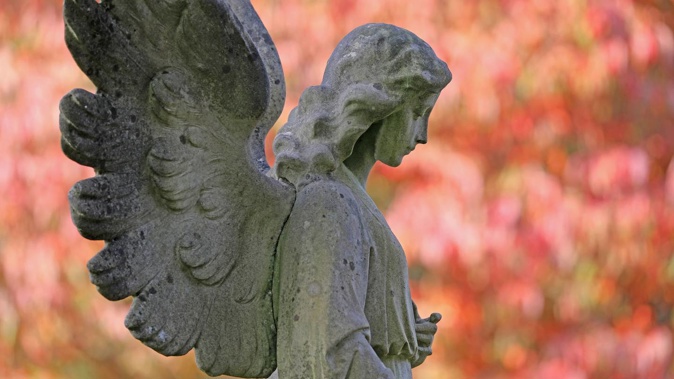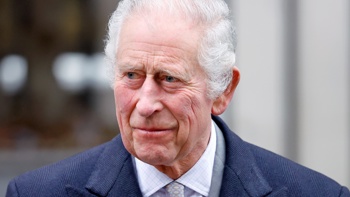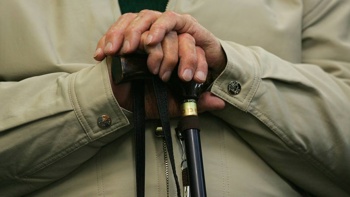
The founder of a religious retreat, an internationally renowned artist and a Kiwi philanthropist are among the select few people given special permission to be buried in unusual places in New Zealand.
Only 0.004 per cent of people who died in New Zealand over the past 60 years were allowed to be buried outside of a registered cemetery or burial ground, figures released under the Official Information Act show.
There were 1,567,860 deaths between 1965 and 2021, during which 56 people were granted the right to be buried in a special place outside of the usual burial areas.
Legislation requires bodies to be buried only within “a cemetery or a denominational burial ground or a private burial ground or a Māori burial ground” except in special circumstances.
The Burial and Cremation Act 1964 allows for people to be buried outside this area if a special application is made.
“A body may be buried in any place, even though that place was not used for burials before the date of the commencement of this Act, if the Minister first certifies in writing that he is satisfied that there are exceptional circumstances which make the burial of that body in that place particularly appropriate,” the Act reads.
The figures provided to the Herald by Manatū Hauora, the Ministry of Health, show 56 applications have been approved since the legislation came into effect - an average of about one per year.
The first special burial under the act happened in 1965, “to enable a respected rangatira [chief or person of high rank] to be buried on his marae,” the Manatū Hauora documents show.
Of the rest of the applications, 13 were granted to allow an urupā or denominational burial ground to be established.
Many of the people buried outside of cemeteries had their applications granted due to “long association with the land”.
/cloudfront-ap-southeast-2.images.arcpublishing.com/nzme/KE6WK7GJCYZTMGJPH5N3BQFWRA.jpg)
The Pukeahu National War Memorial is home to the tomb of the unknown soldier. Photo / Mark Mitchell
Other reasons included the person’s “nationally significant contribution to church and to care of orphans”, someone who “gifted significant reserve to the Crown”, and someone who aided in the protection of a nationally significant habitat.
A handful of burials were listed as regularising an unlawful burial and a couple more related to historical human remains found during site excavations, which needed to be reburied.
That included remains found in Thames in 2001 - Māori remains from the pre-1900 era unearthed during subdivision in the Bay of Plenty in 2004.
In 2003 the burial of the unknown soldier was approved by Cabinet at the Pukeahu National War Memorial in Wellington.
The Commonwealth War Graves Commission told the Weekend Herald at the time it would not allow DNA testing of the soldier’s remains, or any other New Zealander who lies buried in France but whose identity is unknown.
Spokesman Peter Francis said governments, including New Zealand’s, had agreed their war dead should not be disturbed, including for forensic testing and irrespective of advances in science.
The only exception was to return the remains of the soldier for an Unknown Warrior’s tomb.
Other special burials in New Zealand include that of the local founder of the Catholic Church in Northland, two people in Southland who were “pioneers” in organic farming and developing organic export markets, and a person in Northland with a 100-year association with the land who made contributions to education, aged care and emergency helicopter services.
The year 2004 had the most applications approved, with five people granted a special burial, several of which related to the establishment of urupā in Thames, Tairāwhiti and Northland.
Historian Gábor Tóth said it was interesting consideration was given in the legislation to make it easier to be buried on private land.
“I know one motivating factor has been the ongoing demand for owners of family-owned farms which have been in the same family for generations to be allowed to be buried on their own land,” he said.
Burials certainly weren’t a free-for-all before the Act came into effect, he said, pointing to its “grand-daddy”, the Cemeteries Act 1882.
“Clauses 83 to 85 of the original Cemeteries Act cover the issue of non-cemetery burials. It seems that they could take place if the death had occurred more than 5 miles from an established cemetery,” he said.
“That would have normally been a ton of people in rural areas but the Act also stipulates how permission from significant people ... for a non-cemetery burial to take place and my gut feeling was that this was rarely given - otherwise there would be random graves all over the place, like in Rarotonga; an amazing sight if you have ever visited the Cooks.”
The current Act also has an allowance that if a person’s body is more than 32km, by direct line of sight, to the nearest cemetery they can be buried elsewhere, but notification of the death and burial must be sent to a District Court judge. Figures on these burials were unavailable.
Take your Radio, Podcasts and Music with you









